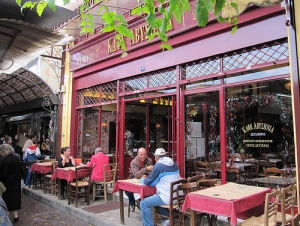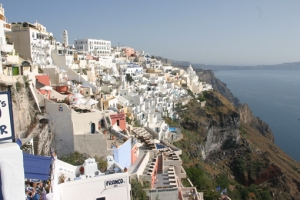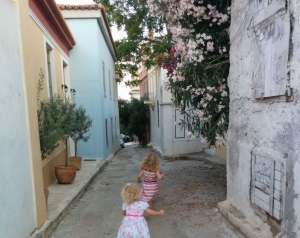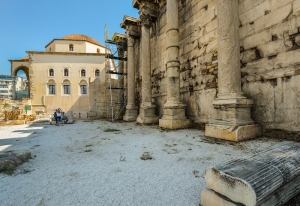XpatAthens
FAOS Sunglasses: Crafted In Greece, Inspired By Light
In Greece, the sun is more than just a source of light—it’s a way of life. It illuminates ancient stories, glistens over crystal-clear waters, and casts golden hues over endless landscapes. Inspired by this radiant energy, FAOS Sunglasses embody the brilliance of Greek heritage, craftsmanship, and sustainability.
A Name Rooted in Light
Derived from the ancient Greek word "φῶς" (phōs), meaning "light," FAOS is more than just eyewear—it’s a tribute to the glorious sun that defines Greece. Designed and handcrafted entirely in Greece, every pair reflects the essence of the Mediterranean, combining timeless elegance with modern innovation. The brand’s signature blue and white hues echo the purity of the Aegean, while the iconic Greek letter "Φ" serves as a proud emblem of its origins.
Handcrafted Excellence, Inspired by Greece
Each pair of FAOS sunglasses is meticulously handcrafted, merging traditional artistry with cutting-edge techniques. Using premium Italian Mazzuchelli acetate, these sunglasses offer superior durability, a luxurious feel, and a finish that stands the test of time. The five-barrel hinges provide 40% more resilience compared to standard eyewear, ensuring long-lasting performance. Every frame is fitted with ZEISS lenses, globally renowned for their crystal-clear optics and advanced anti-glare coatings, offering an unparalleled visual experience.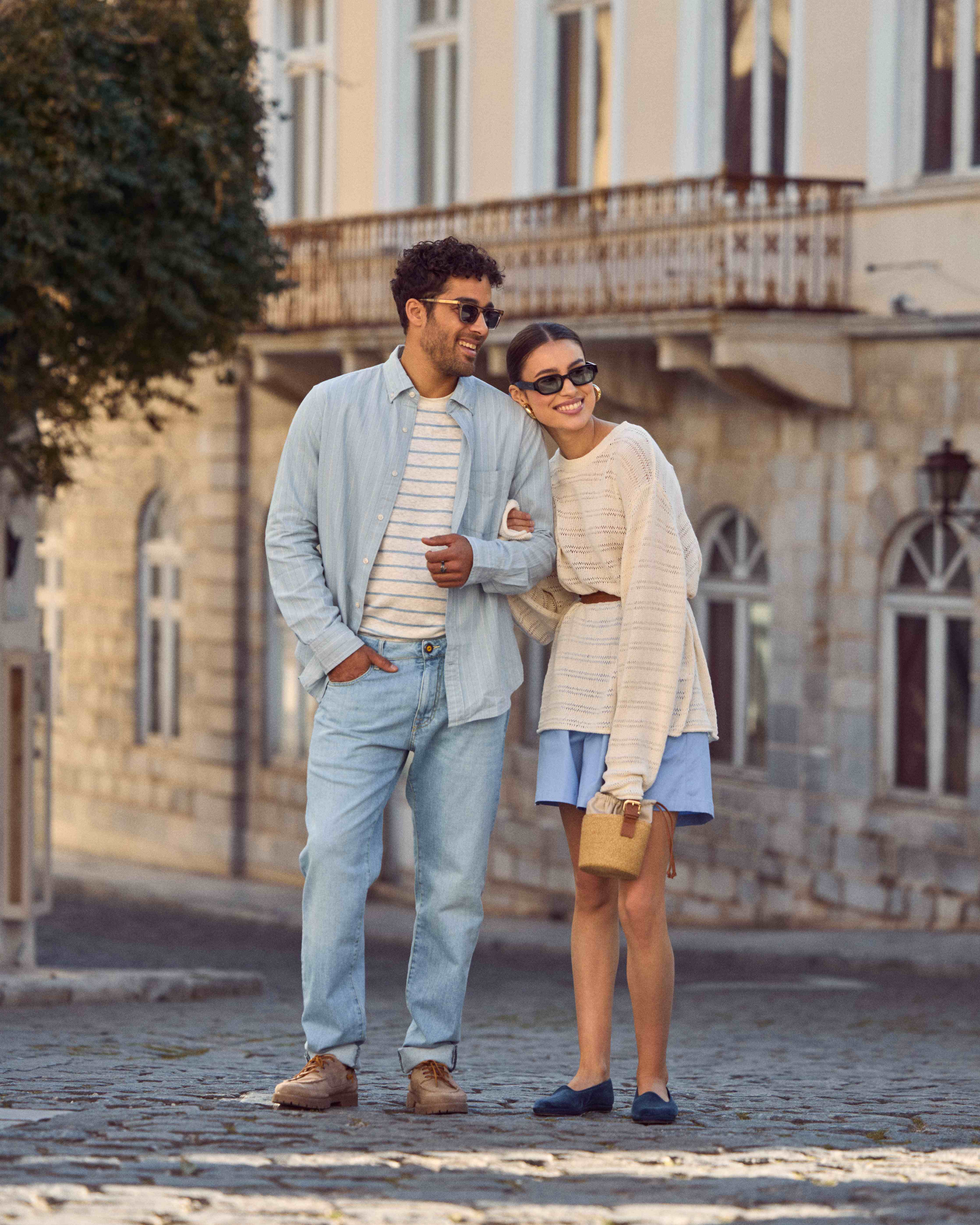
A Sustainable Vision
At FAOS, luxury and sustainability go hand in hand. The brand is committed to eco-conscious production, collaborating with responsible manufacturers who recycle industrial waste, reduce energy consumption, and prioritize ethical craftsmanship. The packaging—an award-winning design—is made from FSC-certified paper, while the cleaning cloths are crafted from recycled ocean plastic bottles, helping to protect the very seas that inspired the brand’s aesthetic. Additionally, 60% of the energy used in the manufacturing process comes from solar power, reinforcing a dedication to a cleaner future.
See the World with ΦAOS

A Story in Every Frame
More than just an accessory, each FAOS model is a narrative of Greek culture, drawing inspiration from historic sites, sun-drenched islands, and architectural wonders. From the sleek, minimalistic lines reminiscent of Cycladic architecture to frames named after legendary locations like Mycenae and Delos, every design carries a piece of Greece’s rich history.
A New Definition of Luxury
FAOS sunglasses are not just about protecting your eyes—they’re about embracing a lifestyle of quality, heritage, and sustainability. By merging Greek craftsmanship with global innovation, FAOS offers eyewear that is bold, sophisticated, and deeply connected to its roots.
With every pair, you wear a story ~ of light, culture, and timeless Greek elegance.
See the World with ΦAOS
My Week in Athens… April 26
Sunday was a gorgeous day – in what promises to be at least six months of more-or-less gorgeous days! – and I wanted to be outside in the sunshine, doing something active… so I dusted off my bicycle and ventured out for a spin.
I headed for the Olympic Stadium complex, since I know that a few of the main gates are normally open and I could cycle around the grounds…. I must say, living in the northern suburbs (or almost anywhere north of the waterfront) means one thing for cyclists: HILLS. But rather than take them as the horrible torture that they really are, I try to take them as a ‘physical challenge’. Right.
Add to that the constant threat of speeding cars that clearly don't notice bicycles, and you have yourself an adventure, to say the least.
But I have to say that I was very pleasantly surprised – cars stopped at intersections to let me go by, drivers gave me lots of space as they drove around me, I made it out alive. It wasn’t nearly as bad as it has been in the past. And the OAKA complex was quite busy: other cyclists, families with kids, skateboarders, remote-control car racers, even a couple tourists snapping pics…
In fact, I’m feeling so pumped after my afternoon ride, that I’m thinking about joining the ‘Freeday’ group for their Friday night adventures around the streets of Athens…
The Freeday outings have turned into a wildly popular weekly social event, with people of different ages and backgrounds from all parts of the greater Athens area meeting, making new friends and sharing their love of bicycling as they discover a different face of the city.
The bikers start gathering at a different designated spot each Friday night and set off for their weekly adventure, cycling around the deserted (or not) streets of Athens. Picture 100’s of bicycles on Kifissias…! The outing usually lasts a few hours, but many of participants continue throughout the night, taking in the sunrise at a different location each time. Check them out on Facebook.
Is Athens on the long road towards being a bicycle-friendly city? Maybe so. I’m even starting to believe that all those hills really are just a ‘physical challenge’. Right.
See you next week.
Jack
In this weekly space, keep up with ‘Jack’ as he navigates daily life in Athens… Anecdotes, stories, hits & misses, the good, the bad and, well, the rest…
Café Abyssinia in Monastiraki
Open daily for lunch and dinner. Main courses about 10 euros.
Visa and Mastercard accepted. Kinetou 7, Monastiraki; 210-321-7047.
Do you have a recommendation or recipe to share? Send it to us at ideas@xpatathens.com!
Santorini
The volcano, however, managed to recreate itself over and over again.
The last big eruption occurred 3,600 years ago (during the Minoan Age), when igneous material (mainly ash, pumice and lava stones) covered the three islands (Thíra, Thirassiá and Asproníssi). The eruption destroyed the thriving local prehistoric civilization, evidence of which was found during the excavations of a settlement at Akrotíri. The solid material and gases emerging from the volcano’s interior created a huge “vacuum” underneath, causing the collapse of the central part and the creation of an enormous “pot” –today’s Caldera– with a size of 8x4 km and a depth of up to 400m below sea level.
The eruption of the submarine volcano Kolúmbo, located 6.5 km. NE of Santorini, on 27th September 1650, was actually the largest recorded in Eastern Mediterranean during the past millennium! The most recent volcanic activity on the island occurred in 1950. The whole island is actually a huge natural geological/volcanological museum where you can observe a wide range of geological structures and forms!
• Searching for romance
Santorini is considered to be the most sought after place for a romantic getaway in Greece, since there are not many places in the world where you can enjoy exquisitely clear waters while perched on the rim of a massive active volcano in the middle of the sea! The island has a growing reputation as a “wedding destination” for couples not only from Greece but from all over the world. A trip to Santorini with the other half is a dream for anyone who has seen at least one photo of the island’s famous Caldera and exchanging kisses beneath Santorini’s famous sunset is the ultimate romantic experience!
• Explore the island’s towns
Firá is the picturesque capital of the island; perched high up on the edge of the Caldera, it looks like a marvellous painting. Firá, together with Oia, Imerovígli and Firostefáni located high above on a cliff, make up the so-called “Caldera’s eyebrow”, the balcony of Santorini, which offers an amazing view of the volcano. Other famous smaller villages are Akrotíri and Méssa Vounó, with their famous archaeological sites, Pýrgos, Karterádes, Emporió, Ammoúdi, Finikiá, Períssa, Perívolos, Megalohóri, Kamári, Messariá and Monólithos: some of the villages are cosmopolitan some more peaceful; they are surrounded by vast vineyards; whitewashed cliff-top towns with castles affording amazing views out over the Aegean. Soaking up the villages’ distinctive traditional atmosphere is a very rewarding experience.
A visit to Santorini is the ultimate gastronomic experience, as the island is a true culinary paradise! Treat your taste buds to some famous traditional products like cherry tomatoes, white egg plants, fava, caper and “hloró tyrí”, a special kind of fresh goat cheese found on the island, or why not try some of the exceptional wines produced from grapes grown in the volcanic soil of the island! Assyrtiko, Athyri, Aidani, Mantilaria and Mavrotragano are just some of the distinctive varieties that you can taste at the island’s famous wineries (some of them operate as a museum as well) or at restaurants.
• Head to volcanic beaches
Venture into Santorini’s seaside treasures and enjoy deep blue waters and beaches with white, red or black sand or volcanic pebbles, spectacular rock formations and impressive lunar landscapes.
Santorini, the youngest volcanic land in the Eastern Mediterranean, is waiting for you! You can reach it by plane or by ship from Piraeus. Don’t think twice! Experience for yourself the once-in-a-lifetime romance and charm of this pearl of the Aegean.
Source: Visitgreece.gr
Russia Seeks Medical Tourism In Greece
Spanakopita Tarts With Roasted Cherry Tomatoes
- 450g (3 cups) plain flour
- 250g chilled butter, cut into 2cm pieces
- 40g (1/2 cup) shredded pecorino or parmesan
- 2 x 240g packets small cherry trussed tomatoes
- Olive oil spray
- 1 egg
- 2-3 tablespoons chilled water
- 250g packet frozen chopped spinach, thawed
- 400g full cream feta, crumbled
- 300g fresh ricotta
- 3 shallots - trimmed, thinly sliced
- 2 tablesppons chopped fresh dill
- 3 teaspoons finely grated lemon rind
- 6 eggs, lightly whisked
Athens One Of The Most Popular Christmas Destinations
To read more, please visit: Greek Reporter
by Toni Aravadinos
Tips For Visiting Athens During The Summer
- The National Gardens
- The New Acropolis Museum
- Hellenic Motor Museum
- The Athens War Museum
- The Museum of Greek Children’s Art
- Museum of the Ancient Agora




